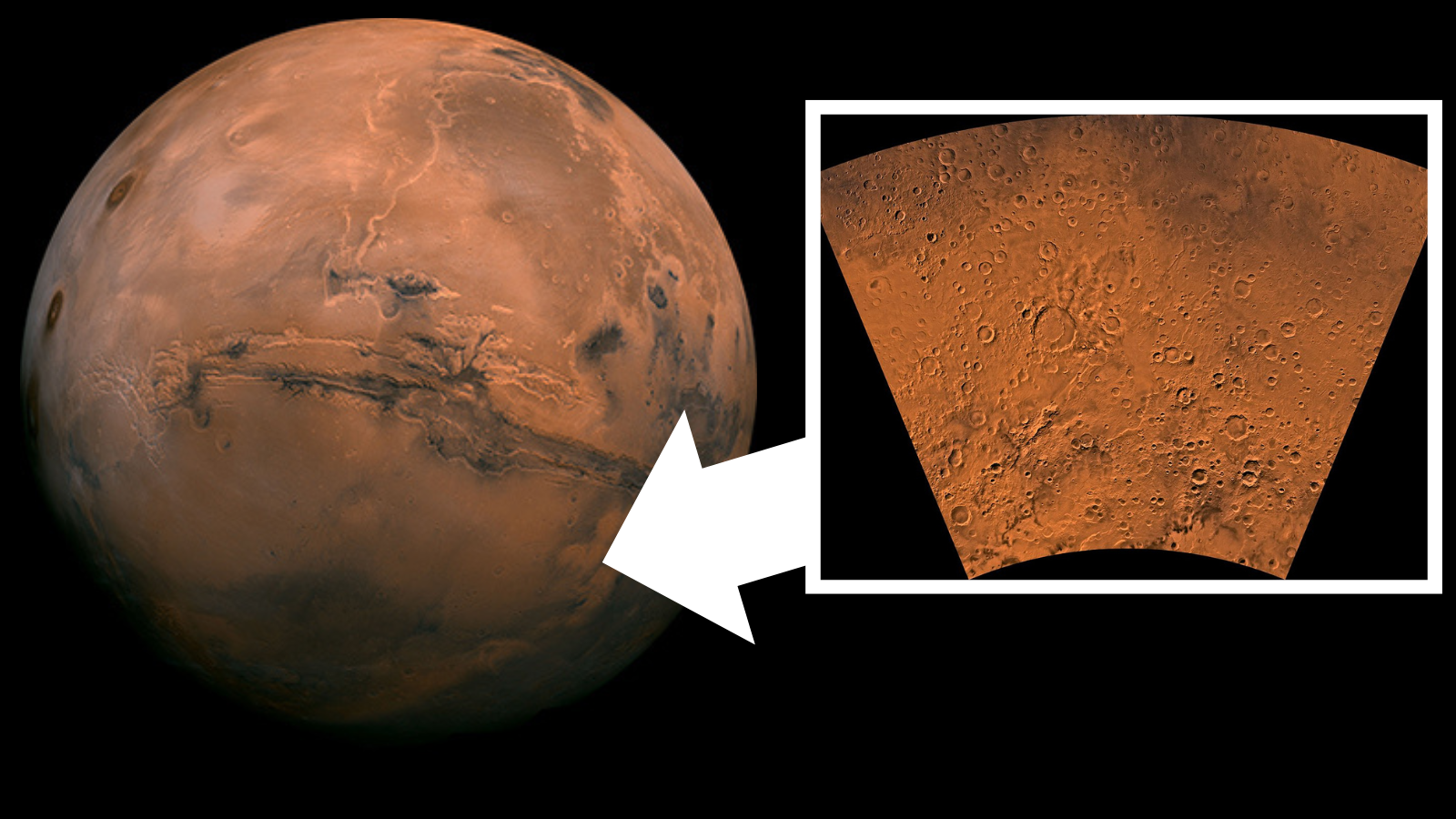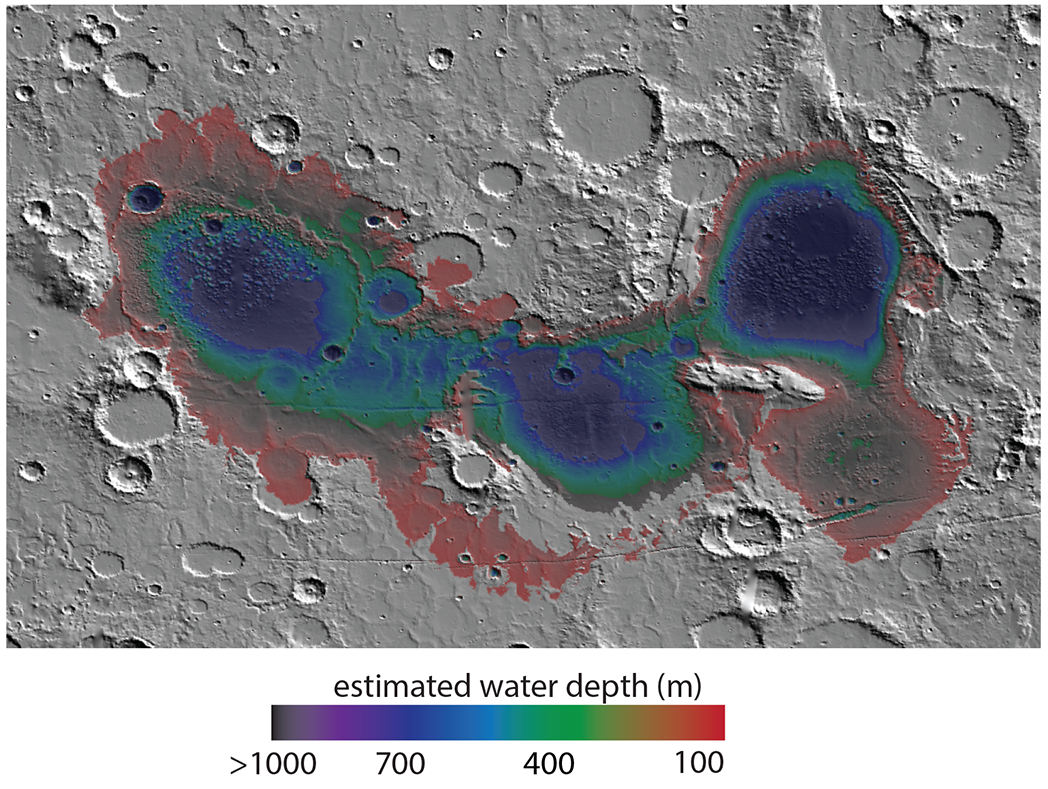Life on Mars could have thrived near active volcanoes and an ancient mile-deep lake
"At the very least, these findings give us a larger number of places we can look for evidence of life."

Early Mars may have been more tectonically and volcanically active than previously thought. Evidence of tectonic activity around 4 billion years ago was provided by 63 new examples of various volcanoes found in a strange region of Mars with odd properties that set it apart from the rest of the Martian highlands.
A team of planetary scientists found that the landscape of the Eridania region of Mars, located in the planet's southern hemisphere, appears to have been shaped in response to changes occurring within Mars' crust, not from forces originating from above or below it. The discovery could influence the hunt for signs of ancient life on the Red Planet, currently conducted by NASA's Curiosity and Perseverance rovers.
"The large basins in this region once hosted a lake system known as the Eridania paleolake, which was up to around a mile deep when the lake was at its greatest extent," team member and planetary geologist at the Planetary Science Institute Aster Cowart told Space.com. "Long-lived volcanic sources next to abundant water may have fueled hydrothermal systems that could have nurtured life.
"At the very least, these findings give us a larger number of places we can look for evidence of life."
Related: Water ice buried at Mars' equator is over 2 miles thick
Unlike Earth today, modern-day Mars has little to no volcanic or tectonic activity. Additionally, because around half of the surface of the Red Planet appears to be older than 3.5 billion years, this suggests that crustal recycling hasn't happened extensively on Mars.
On Earth, crustal recycling is driven by plate tectonics when one tectonic plate slips under another, causing surface material to be recycled into the mantle between Earth's crust and its molten core.
Get the Space.com Newsletter
Breaking space news, the latest updates on rocket launches, skywatching events and more!
The team behind this new research studied the morphology and mineralogy of the Mars' Eridania region in the southern hemisphere using data from spacecraft around the Red Planet, including the Mars Global Surveyor, Mars Odyssey and the Mars Reconnaissance Orbiter.
"Various attributes of the Eridania region have drawn special attention for a while," Cowart added. "Gamma-ray spectroscopy shows this to be a region of the crust with an especially distinctive composition, gravity data has shown it to be generally less dense and thicker than the rest of the Martian crust, and magnetic data shows it to be an intensely magnetized crust."
They identified 63 examples of hitherto uncovered volcanism across four different volcano types: Volcanic domes, stratovolcanoes, pyroclastic shield, and caldera complexes.

The team suspects the Eridania region alone contains hundreds of other examples of volcanic activity that are what remains from bouts of extreme geologic activity on Mars around 3.5 billion years ago. They also think the volcanic variety seen in this region could also be replicated in other regions of the Martian surface.
Tectonic activity gave early Mars a lift
The type of geological activity seen on Mars via these observations is vertical tectonics, in which land shifts upwards, causing uplift and subsidence. This was a precursor for the full plate tectonics we see on Earth today.
Cowart said the crustal changes behind these newly discovered volcanic features are analogous to a step that Earth took on its own evolutionary pathway toward plate tectonics more than 2.5 billion years ago.
"Prior to the development of plate tectonics, it was difficult to recycle crust back into the mantle because the crust's composition was more uniform, the crust was more rigid, and it was buoyant relative to the mantle," Cowart continued. "However, the slow incorporation of water in the deeper levels of the crust began to cause mineral transformations that made the deep crust denser."
Cowart explained that once enough of Earth's lower crust had undergone these mineral transformations, it began to sag downwards into the mantle, a process that is referred to as 'sagduction.' This pushed water-rich minerals that had formed near the surface of the Earth deeper into its crust, where they helped form buoyant magmas. The buoyancy of these magmas caused other regions of the crust to rise upwards.
This resulted in a landscape dominated by large basins at points where the crust was sagging, mountain chains where the crust was rising upwards, and volcanic rocks with a more silica-rich composition than rocks from mantle sources.
"This is exactly what we see in the Eridania region," Cowart said. "It is really exciting to see a landscape so heavily shaped by pre-plate tectonic processes. A lot of what we know about these processes on Earth are either pieced together from heavily eroded ancient rocks that have some degree of overprinting from later plate tectonic activity or from where they occur in modern settings and are influenced by plate tectonic dynamics."
Not only could this newly discovered geology of Mars offer an opportunity to study a period in Earth's past that is not accessible in our planet's geological record, but it could also help determine how life emerged on our planet.
This is because the processes behind these features could be a close analog to scenarios concerning the origins of life that see living things emerge around porous hydrothermal vents, sites where heated, mineral-laden seawater spilled from cracks in the ocean crust.
"It's just astonishing to think about the scale of activity in this region. Mars has a tendency to do everything in a big way, and seeing a landscape nearly the size of Europe or Arabia shaped by an interrelated set of tectonic processes in this amount of detail is amazing," Cowart concluded. "Seeing a Martian landscape
shaped by these processes and preserved in stasis provides us with a great opportunity to investigate planetary landscape evolution in more
detail."
The team's research was published on Monday (Feb. 12) in the journal Nature Astronomy.
Join our Space Forums to keep talking space on the latest missions, night sky and more! And if you have a news tip, correction or comment, let us know at: community@space.com.

Robert Lea is a science journalist in the U.K. whose articles have been published in Physics World, New Scientist, Astronomy Magazine, All About Space, Newsweek and ZME Science. He also writes about science communication for Elsevier and the European Journal of Physics. Rob holds a bachelor of science degree in physics and astronomy from the U.K.’s Open University. Follow him on Twitter @sciencef1rst.









